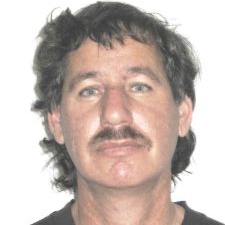The Use of Greywater and Wastewater for Irrigation
A special issue of Water (ISSN 2073-4441). This special issue belongs to the section "Water, Agriculture and Aquaculture".
Deadline for manuscript submissions: closed (31 October 2021) | Viewed by 29953
Special Issue Editors
Interests: marginal water treatment; greywater; agrowaste; aquaculture; RAS; aquaponic; environmental assessment
Interests: bioremediation of contaminated groundwater and soil; biotreatment of industrial wastewater; biodegradation of organic pollutants; safe reuse of treated effluents
Special Issues, Collections and Topics in MDPI journals
Special Issue Information
Dear Colleagues,
Global population growth, urbanization, and climate change emphasize the need for new water sources and the vulnerability of water sources to pollution. In this context, the 2017 United Nations Global Water Report focuses on wastewater reuse as an ‘untapped’ source to confront both water availability and its pollution. In rapidly growing urban centers as well as rural areas, the lack of wastewater collection and treatment often hamper its safe reuse. Onsite separation of black water, the waste stream from toilets, from greywater (GW), representing the other waste streams (such as showers, laundry, and wash basins) and the latter's reuse have gained acceptance in the last three decades. As GW is the less polluted stream of domestic wastewater, its onsite treatment and reuse has the potential to benefit users (e.g., water saving and water availability), and on a national scale, to create a new source of water and reduce investment in infrastructure. However, along with its benefits, wastewater and GW reuse carries potential risks and challenges that cannot be ignored and must be mitigated for safe reuse in general and for irrigation in particular. Topics such as (but limited to) implementation of technologies (mostly onsite) for wastewater/greywater treatment; pollutants in GW and wastewater; antibiotic resistance; health and environmental risks characterization; risk assessment; standards and standardization; and impact of reuse on soil and plant quality will be considered.
Prof. Dr. Amit Gross
Prof. Dr. Zeev Ronen
Guest Editors
Manuscript Submission Information
Manuscripts should be submitted online at www.mdpi.com by registering and logging in to this website. Once you are registered, click here to go to the submission form. Manuscripts can be submitted until the deadline. All submissions that pass pre-check are peer-reviewed. Accepted papers will be published continuously in the journal (as soon as accepted) and will be listed together on the special issue website. Research articles, review articles as well as short communications are invited. For planned papers, a title and short abstract (about 100 words) can be sent to the Editorial Office for announcement on this website.
Submitted manuscripts should not have been published previously, nor be under consideration for publication elsewhere (except conference proceedings papers). All manuscripts are thoroughly refereed through a single-blind peer-review process. A guide for authors and other relevant information for submission of manuscripts is available on the Instructions for Authors page. Water is an international peer-reviewed open access semimonthly journal published by MDPI.
Please visit the Instructions for Authors page before submitting a manuscript. The Article Processing Charge (APC) for publication in this open access journal is 2600 CHF (Swiss Francs). Submitted papers should be well formatted and use good English. Authors may use MDPI's English editing service prior to publication or during author revisions.
Keywords
- Implementation of technologies (mostly onsite) for wastewater/greywater treatment
- Pollutants in GW and wastewater
- Antibiotic resistance
- Health and environmental risk characterization
- Risk assessment
- Standards and standardization
- Impact of reuse on soil and plant quality






